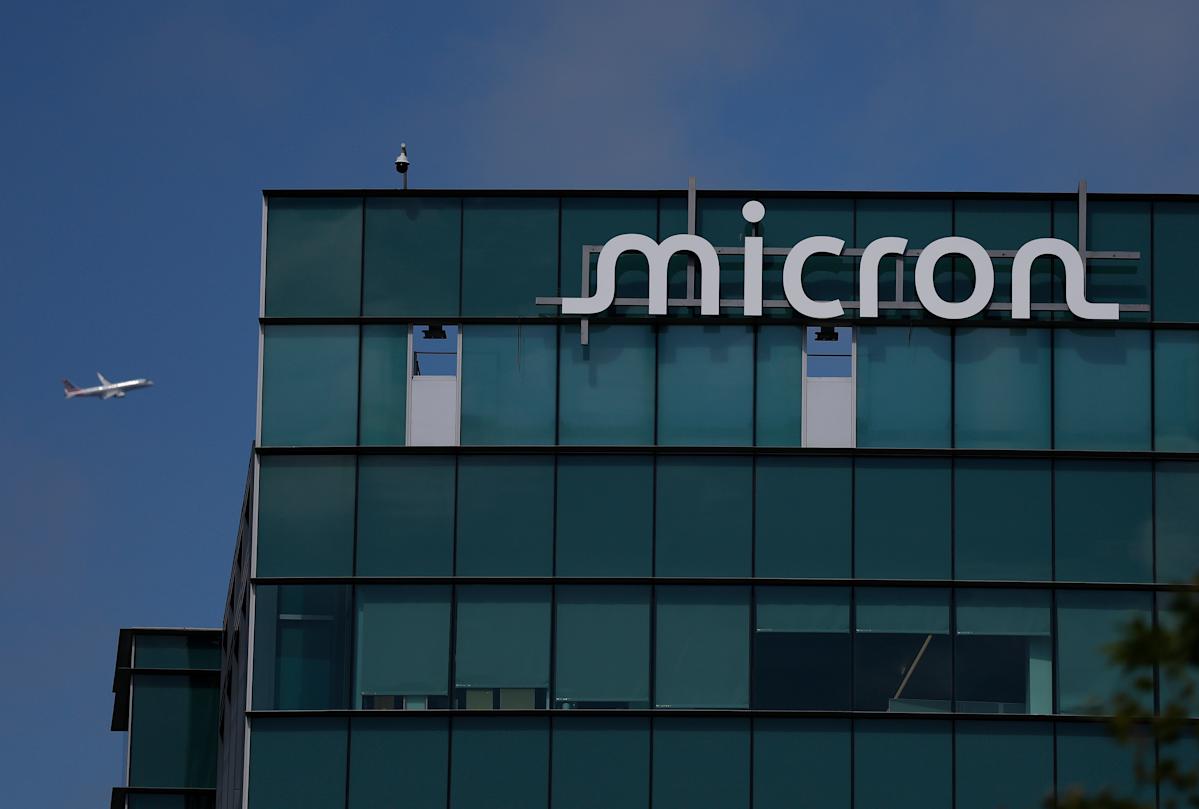Micron (MU) reported fiscal fourth quarter earnings results after the bell Tuesday that surpassed Wall Street’s expectations — a positive signal for the AI trade and for investors hoping the chipmaker’s stock can sustain its recent upswing.
Micron’s fiscal fourth quarter revenue of $11.3 billion was ahead of the $11.15 billion expected by analysts polled by Bloomberg. The Idaho-based memory chipmaker — whose semiconductors are used alongside Nvidia’s chips in AI data centers — saw adjusted earnings per share of $3.03 for the three months ending Aug. 28, more than the $2.84 projected.
Micron’s performance also surpassed its boosted outlook for the quarter provided in August.
The beat was fueled by the AI data center boom, company executives said, with data centers representing 40% of the chipmaker’s total revenue in the fourth quarter.
The stock briefly climbed 2% following the results in after-hours trading to hit $171.50, above its all-time intraday high last week, but later pared gains.
Micron’s guidance for its 2026 fiscal first quarter was also above expectations. The company guided for first quarter revenue between $12.2 billion and $12.8 billion, more than the $11.9 billion expected by analysts tracked by Bloomberg. The chipmaker said it expects first quarter adjusted earnings per share to fall between $3.60 and $3.90, ahead of the $3.05 projected.
“Over the coming years, we expect trillions of dollars to be invested in AI, and a significant portion will be spent on memory,” CEO Sanjay Mehrotra said in a call with analysts following the company’s results. “As the only US-based manufacturer of memory, Micron is uniquely positioned to benefit from the AI opportunity ahead.”
Micron has been one of a number of tech giants deepening investments in the US amid pressure from the Trump administration. The firm in June said it will invest $200 billion in its US memory chipmaking facilities.
The company is one of three leading memory chipmakers. Its rivals are Korea-based SK Hynix (000660.KS) and Samsung Electronics (005930.KS), but the latter has fallen behind in the AI race.
Micron’s DRAM (dynamic random access memory) chips are used for short-term memory storage in everything from personal computers to AI data centers and historically have accounted for the majority of the company’s revenue.
One kind of Micron’s DRAM tech, its HBM (high bandwidth memory) chips, which include multiple vertically stacked DRAM semiconductors, have been crucial to the AI buildout and are used alongside GPUs (graphics processing units) in Nvidia’s (NVDA) AI systems for data centers.
Micron (MU) reported fiscal fourth quarter earnings results after the bell Tuesday that surpassed Wall Street’s expectations — a positive signal for the AI trade and for investors hoping the chipmaker’s stock can sustain its recent upswing.
Micron’s fiscal fourth quarter revenue of $11.3 billion was ahead of the $11.15 billion expected by analysts polled by Bloomberg. The Idaho-based memory chipmaker — whose semiconductors are used alongside Nvidia’s chips in AI data centers — saw adjusted earnings per share of $3.03 for the three months ending Aug. 28, more than the $2.84 projected.
Micron’s performance also surpassed its boosted outlook for the quarter provided in August.
The beat was fueled by the AI data center boom, company executives said, with data centers representing 40% of the chipmaker’s total revenue in the fourth quarter.
The stock briefly climbed 2% following the results in after-hours trading to hit $171.50, above its all-time intraday high last week, but later pared gains.
Micron’s guidance for its 2026 fiscal first quarter was also above expectations. The company guided for first quarter revenue between $12.2 billion and $12.8 billion, more than the $11.9 billion expected by analysts tracked by Bloomberg. The chipmaker said it expects first quarter adjusted earnings per share to fall between $3.60 and $3.90, ahead of the $3.05 projected.
“Over the coming years, we expect trillions of dollars to be invested in AI, and a significant portion will be spent on memory,” CEO Sanjay Mehrotra said in a call with analysts following the company’s results. “As the only US-based manufacturer of memory, Micron is uniquely positioned to benefit from the AI opportunity ahead.”
Micron has been one of a number of tech giants deepening investments in the US amid pressure from the Trump administration. The firm in June said it will invest $200 billion in its US memory chipmaking facilities.
The company is one of three leading memory chipmakers. Its rivals are Korea-based SK Hynix (000660.KS) and Samsung Electronics (005930.KS), but the latter has fallen behind in the AI race.
Micron’s DRAM (dynamic random access memory) chips are used for short-term memory storage in everything from personal computers to AI data centers and historically have accounted for the majority of the company’s revenue.
One kind of Micron’s DRAM tech, its HBM (high bandwidth memory) chips, which include multiple vertically stacked DRAM semiconductors, have been crucial to the AI buildout and are used alongside GPUs (graphics processing units) in Nvidia’s (NVDA) AI systems for data centers.











Leave feedback about this